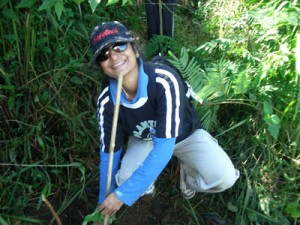 The overuse of “Green” may have you seeing red, but hype is a normal part of the evolution of new technologies. The issues driving the need for Green IT are real, and growing.
The overuse of “Green” may have you seeing red, but hype is a normal part of the evolution of new technologies. The issues driving the need for Green IT are real, and growing.
Green computing or green IT, refers to environmentally sustainable computing, and is defined as the study and practice of designing, manufacturing, using, and disposing of computers, servers, and associated subsystems efficiently and effectively with minimal or no impact on the environment. The goals of green computing are to reduce the use of hazardous materials, maximize energy efficiency during the product’s lifetime, and promote the recyclability or biodegradability of defunct products and factory waste. Research continues into key areas such as making the use of computers as energy-efficient as possible, and designing algorithms and systems for efficiency-related computer technologies.The number of personal computers in use worldwide will reach 2 billion by 2015 across the world, according to hi-tech consultancy Gartner Dataquest report. Some of the factors that will enable such a rapid proliferation of computers include a significant reduction in the price of hardware and software due to new technology, as well as the introduction of wireless Internet access to remote areas that previously had no such facilities. But this is not about technology growth. The point here is that computers can help save the trees.

Paper has been around since the Egyptians invented the paper making process some 4,000 years ago. Though the process has been refined over years but the basic raw material is pulp that is obtained from wood by cutting millions of trees around the world every year. The tissue paper we use so indiscriminately might contain fibers from so many different trees that might have jointly traveled thousands of kilometers and factories from forest to the dining table. The present trends are a big cause of concern because they are linked with numerous environmental problems, from deforestation to industrial pollution and environmental degradation.
The widespread use of computers and related technologies can make a big difference in paper consumption all over the world. Although a ‘paperless’ office is still far from reality, computer mediated technologies have made it possible to publish and distribute written words without using paper in the cyber age. The online connected World Wide Web is significantly affecting our paper consumption habits, as online publishing at industrial and individual levels with books, catalogs on commercial websites, blogs, online music downloads, etc. may slow down the use of paper. Furthermore, online newspapers, e-bills, financial payments and transactions, e-tickets and boarding passes save tons of paper every day.
Another smart use of technology to save paper is the humble digital photo frame. They are wonderful devices to showcase information in an attractive manner while saving paper at commercial establishments and increasing customer engagement. This allows easy updating of information along with attractive presentation, reducing the printing of paper brochures and information sheets. Bigger versions of this concept are huge LCD or LED panels at exhibitions, malls and outdoors. It stands to reason that there are a lot less printed posters and signs in landfills as a result digital signage taking its place.
Collaborative online applications to share and edit documents online limit paper consumption, postal services, ink use, printer energy and help keep all of your documents easily manageable and accessible. Other collaborative applications such as video conferencing and tele-presence are finding innovative uses from virtual business meetings to e-learning and medical consultations.
The biggest step towards saving trees is to utilise greener technology… remember, every little bit makes a difference.



